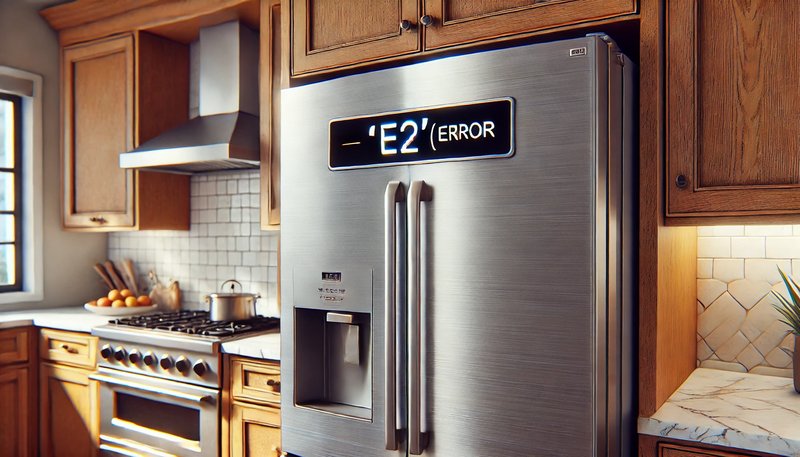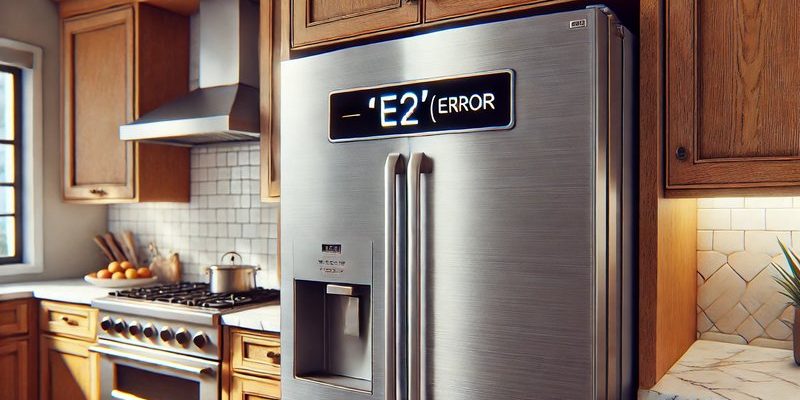
In simple terms, the E3 error code generally indicates a problem with the refrigerator’s defrost system. Imagine your refrigerator as a mini winter wonderland. Its job is to keep things cool, but not so cool that everything turns into an ice block. The defrost system acts as the warming sun of your mini winter, preventing frost buildup. So, when you spot an E3 error, it indicates that the defrost system isn’t working as it should. This can lead to frost accumulation, which eventually hampers the refrigerator’s efficiency. Let’s explore more about this and what you can do to tackle it.
Understanding the Defrost System
The defrost system in your GE refrigerator is like a well-choreographed dance of components working together to keep frost at bay. At the heart of this system are the defrost heater, defrost thermostat, and defrost timer or control board. Let’s break these down.
The defrost heater is quite literally the heater in the fridge. Its role? To melt away any ice that forms on the evaporator coils. Think of it like a hairdryer softly blowing warm air over your frozen windshield in winter. When this heater fails, ice remains stubbornly stuck, much like that tough patch of ice on your car.
Next up, the defrost thermostat. It’s like the thermostat in your home, clicking on to say, “Hey, it’s time to defrost!” It senses the temperature in the coils and gives the signal when things are getting too chilly. If this component fails, it might think everything’s sunny and warm when it’s actually snowing inside your fridge.
And finally, the defrost timer or control board. This is the brain of the operation, orchestrating when the defrost cycle should kick in. Picture it like a conductor in an orchestra, ensuring everyone is playing in harmony. If the timer or control board malfunctions, the defrost heater might not even get the chance to do its job.
Common Causes of the E3 Error
You might be wondering, what can go wrong with this symphony of parts? Well, quite a few things, actually. The most common culprit behind the E3 error is a faulty defrost heater. Over time, like any hardworking component, it can burn out or get damaged. When this happens, the heater can no longer remove ice from the coils, leading to frost buildup and subsequently triggering the E3 error code.
Another frequent issue is with the defrost thermostat. If this device is faulty, it won’t detect the drop in temperature and thus won’t activate the heater. Imagine trying to tell your car’s GPS you’re at a different location when it’s not – it just won’t work right, will it? Similarly, a misreading thermostat keeps the coils icy.
Lastly, the defrost timer or control board might fail. When the orchestrator falters, the symphony doesn’t play its tune. If the timer doesn’t signal the heater to start the defrost cycle, the refrigerator stays cool without ever breaking the ice buildup. Troubles with wiring or the board itself can also cause this hiccup.
Detecting the E3 Error
Now, how do you go about confirming this pesky error? Recognizing the signs early can save you a lot of hassle and prevent food spoilage. When the E3 error crops up, you might notice the fridge isn’t cooling effectively. Ice might start to take over the freezer like an unwelcome guest at a party, and the refrigerator section might feel warmer than usual.
Another telltale sign is the frequency of the defrost cycle. If you notice your refrigerator running without the usual breaks, or if you hear the defrost cycle kicking in too often, it might indicate a problem. It’s like your fridge shouting, “Something’s up!” without using any actual words.
If you’ve spotted these signs, it could be time to dig a little deeper. While some issues are straightforward to check, such as visible frost on the coils, others might require a bit of courage and a screwdriver to inspect, like testing the heater for continuity. When in doubt, though, reaching out to a professional technician is always a safe bet to avoid further complications.
What to Do Next
So you’ve identified the E3 error code; what now? First off, stay calm. There’s no need to dump all your groceries or rush out to buy a new refrigerator just yet. Start by addressing the most common issues. If you’re somewhat handy, you can begin by examining the defrost heater. Disconnect power to the refrigerator and use a multimeter to test for continuity. No continuity means it’s time for a heater replacement.
Next, check the defrost thermostat. If it’s frosted over, you could try manually defrosting the fridge to see if that resolves the issue temporarily. However, if the problem persists, replacing the thermostat might be necessary. Similarly, if the defrost timer or control board seems faulty, you might need professional help to either reset or replace these components.
Finally, consider scheduling regular maintenance. Just like changing the oil in your car, keeping your fridge’s defrost system in top shape can prevent the E3 error from making its dreaded return. You can also check your refrigerator’s manual for any specific troubleshooting steps provided by GE.
Preventing Future Errors
To avoid the E3 error code popping up again, it’s worth implementing a few preventative measures. Regularly clean the inside of your refrigerator, especially the areas around the evaporator coils. By doing this, you reduce the chances of frost buildup. Ensuring that the door seals are intact and free from damage can also help, as it prevents warm air from sneaking in and causing extra frost to form.
Moreover, it’s a good idea to keep an ear out for unusual noises or cycles. Just like you’d notice if your car’s engine sounded off, being attuned to how your fridge operates daily can help you spot potential issues early.
In conclusion, while the E3 error code may be a nuisance, it’s often a manageable one. With a bit of patience, some troubleshooting, and perhaps some professional help, your GE refrigerator will be back to keeping things cool and calm in no time.
